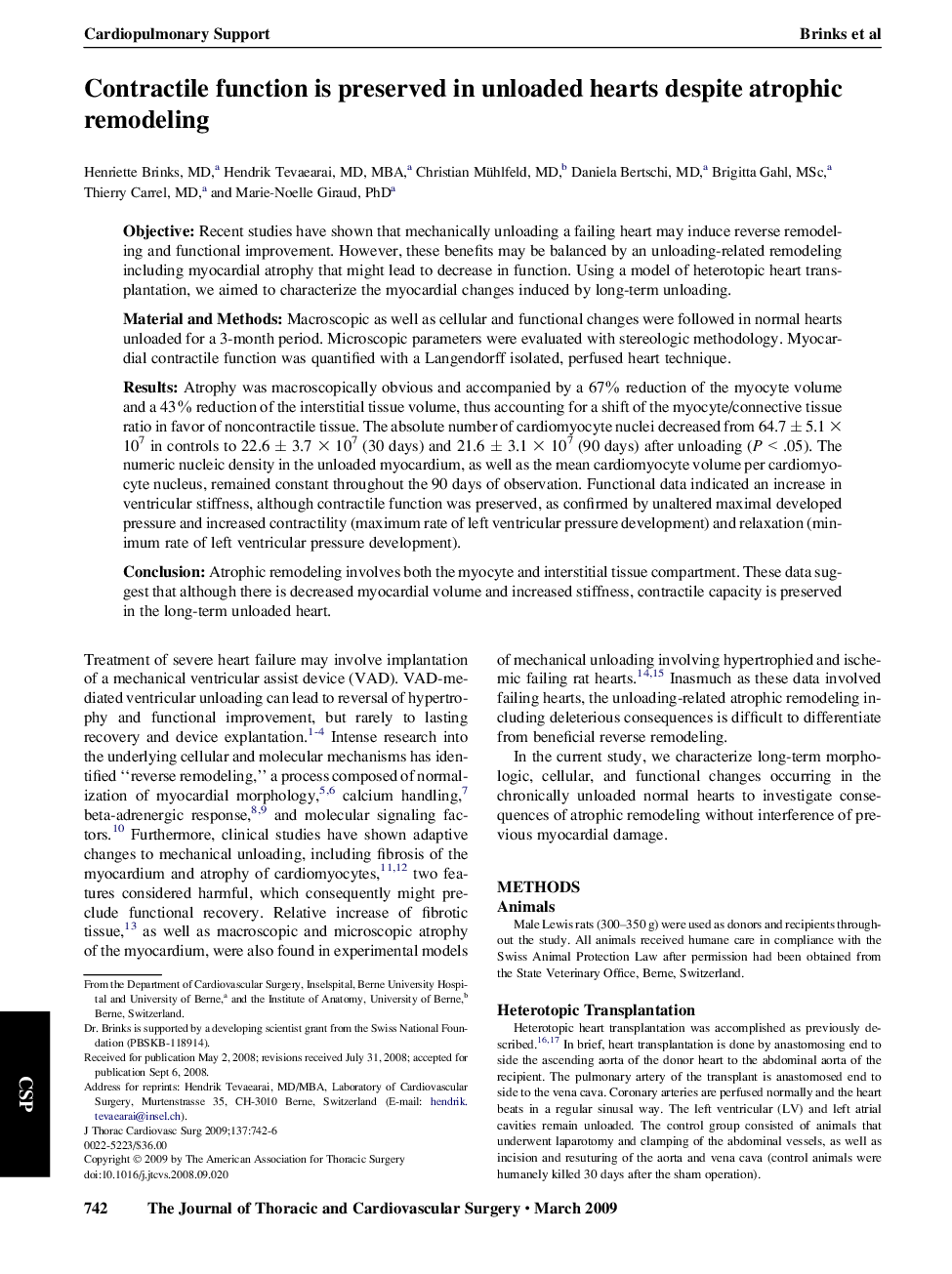| Article ID | Journal | Published Year | Pages | File Type |
|---|---|---|---|---|
| 2985836 | The Journal of Thoracic and Cardiovascular Surgery | 2009 | 5 Pages |
ObjectiveRecent studies have shown that mechanically unloading a failing heart may induce reverse remodeling and functional improvement. However, these benefits may be balanced by an unloading-related remodeling including myocardial atrophy that might lead to decrease in function. Using a model of heterotopic heart transplantation, we aimed to characterize the myocardial changes induced by long-term unloading.Material and MethodsMacroscopic as well as cellular and functional changes were followed in normal hearts unloaded for a 3-month period. Microscopic parameters were evaluated with stereologic methodology. Myocardial contractile function was quantified with a Langendorff isolated, perfused heart technique.ResultsAtrophy was macroscopically obvious and accompanied by a 67% reduction of the myocyte volume and a 43% reduction of the interstitial tissue volume, thus accounting for a shift of the myocyte/connective tissue ratio in favor of noncontractile tissue. The absolute number of cardiomyocyte nuclei decreased from 64.7 ± 5.1 × 107 in controls to 22.6 ± 3.7 × 107 (30 days) and 21.6 ± 3.1 × 107 (90 days) after unloading (P < .05). The numeric nucleic density in the unloaded myocardium, as well as the mean cardiomyocyte volume per cardiomyocyte nucleus, remained constant throughout the 90 days of observation. Functional data indicated an increase in ventricular stiffness, although contractile function was preserved, as confirmed by unaltered maximal developed pressure and increased contractility (maximum rate of left ventricular pressure development) and relaxation (minimum rate of left ventricular pressure development).ConclusionAtrophic remodeling involves both the myocyte and interstitial tissue compartment. These data suggest that although there is decreased myocardial volume and increased stiffness, contractile capacity is preserved in the long-term unloaded heart.
